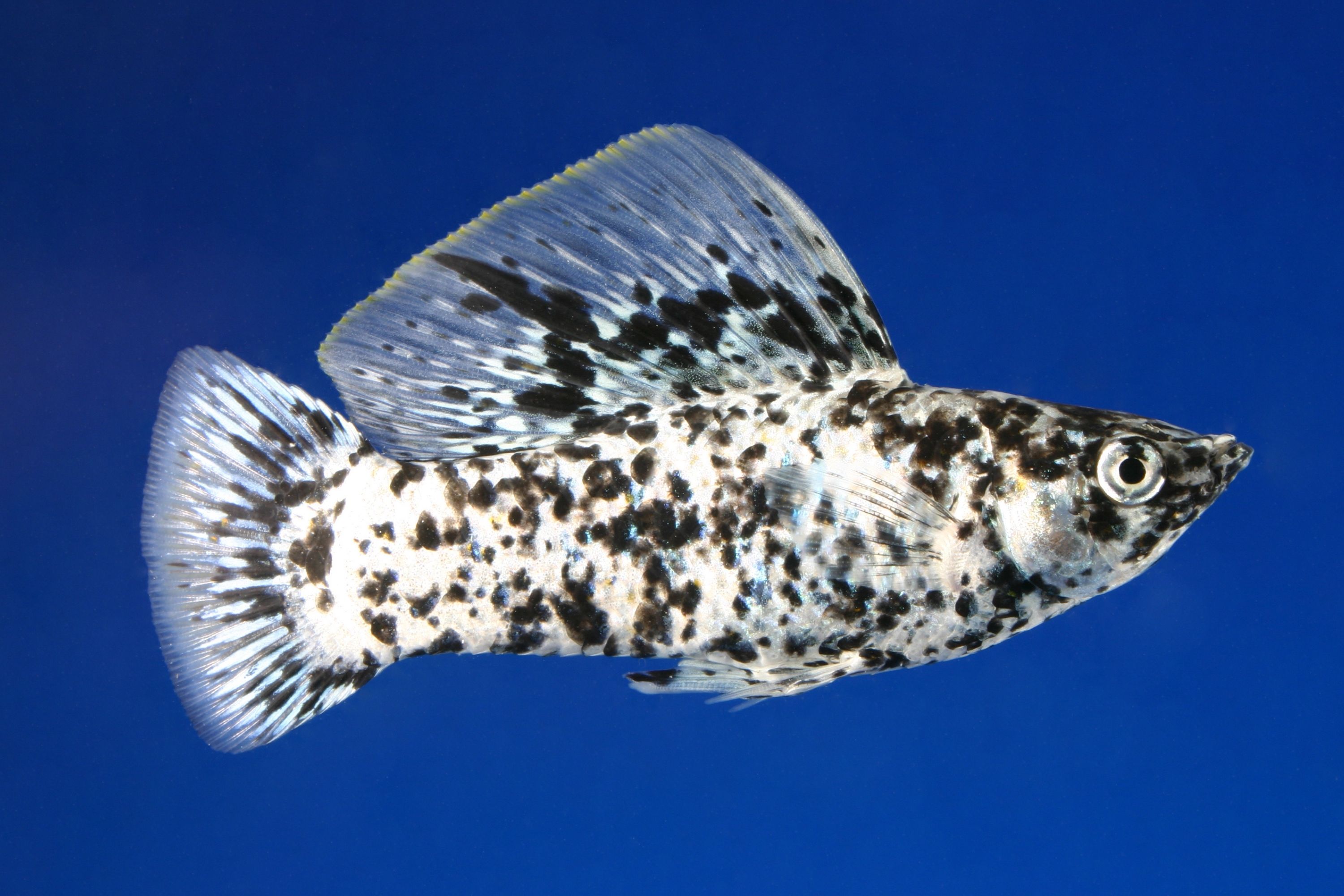Dalmation Lyretail Molly
(Poecilia latipinna)

Description
The sailfin molly (Poecilia latipinna) is a species of fish of the genus Poecilia. They inhabit fresh, brackish, salt, and coastal waters from North Carolina to Texas and the Yucatán Peninsula of Mexico. The sailfin molly was originally described in 1821 as Mollienesia latipinna by the naturalist Charles Alexandre Lesueur, who based his description upon specimens from freshwater ponds in the vicinity of New Orleans, Louisiana. However, Lesueur described other collections of the sailfin molly as Mollienesia multilineata in 1821, the same year in which he described M. latipinna. This conflict created confusion and eventually necessitated a ruling by the International Commission on Zoological Nomenclature (ICZN). In 1959, the ICZN placed precedence on the name Mollienesia latipinna Lesueur 1821. In a landmark definitive work on poeciliid fishes, Donn Rosen and Reeve Bailey (1959) noted the priority of Poecilia by Marcus Elieser Bloch and Johann Gottlob Schneider (1801) with regards to Mollienesia by Lesueur (1821), thereby relegating Mollienesia to the synonymy of Poecilia. The sailfin molly is found in freshwater habitats from North Carolina to Texas and the Yucatán Peninsula of Mexico. Preferring marshes, lowland streams, swamps, and estuaries, the sailfin molly is very common in peninsular Florida. Nonindigenous populations are established in New Zealand, in the western U.S., and Hawaii. Sailfin mollies introduced to California have caused a decline in populations of the federally protected and endangered desert pupfish (Cyprinodon macularius). It is also invasive to Iraq, threatening many killifish endemic to the basin of the Tigris and Euphrates. It was introduced in the 1920s to the Banff Hot Spring, in Banff National Park. Sailfin mollies are most commonly observed at the shallow surface waters along the edges of marshes, lowland streams, ponds, swamps, estuaries and even ephemeral water bodies such as roadside ditches. Small to large aggregations of the species are most commonly found under floating vegetation or near structures in the water, minimizing their chances of being observed by potential predators. The sailfin molly is a tolerant species, as it can exploit the thin film of oxygen-rich surface water with its upturned mouth, so is able to survive oxygen-depleted habitats. A euryhaline species, the sailfin molly may be found in a variety of saline environments, tolerating salinities as high as 87 ppt and breeding in brackish waters.
Taxonomic tree:







